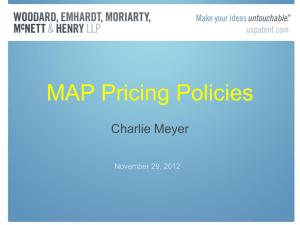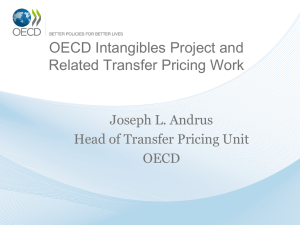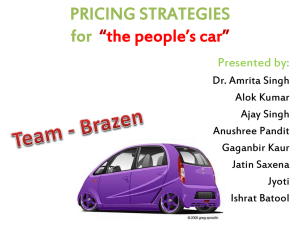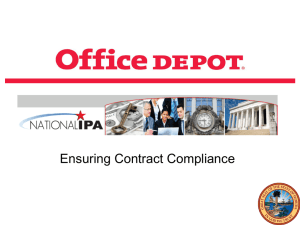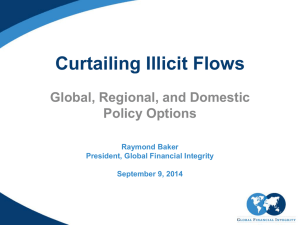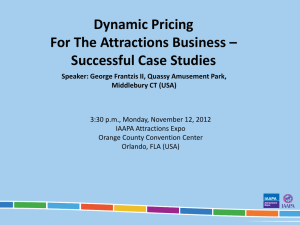notes
advertisement
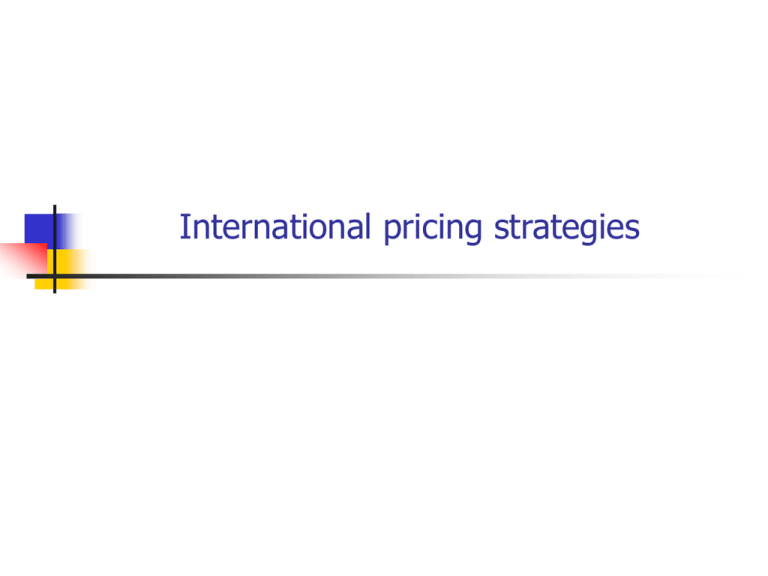
International pricing strategies Learning Objectives Identify and evaluate the factors affecting international pricing Appreciate the significance of costs Develop pricing strategies for different products/markets Appreciate the problems associated with implementing international pricing strategies Pricing is………. The only element of the marketing mix which creates revenue (and profit?) The most neglected element of the marketing mix in terms of academic research Increasingly important in the wake of market de-regulation price harmonisation policies What influences international pricing? Corporate objectives/strategy Costs What influences international pricing? 1. Company objectives/strategy pricing* Take margins now (premium pricing strategy) USE: Take margins later (discount pricing strategy) USE: following high investment in R&D, A&P, brand development etc. Reflect premium brand/product entry strategy e.g. Nissan, Toyota, Honda in 1970s e.g. a strategy to buy market share Never take margins (loss leader strategy/crosssubsidisation) USE: to promote engagement with the brand *Lancioni and Gattorna, 1992 What influences international pricing? 2. Company costs – usually the price floor Fixed/indirect – unrelated to the level of output Variable/direct - related to the quantity produced High for services Low for services Specific international costs (price escalation): Carriage, insurance and freight (c.i.f.):transport, agents’ fees, port charges, documentation costs etc. Plus: Import duty Distributor mark-ups Host country tax Impact of price escalation - 3 cases Domestic channel Firm to wholesaler to retailer Export channel 1 Firm to foreign wholesaler to retailer Export channel 2 Firm to foreign importer to wholesaler to retailer £ £ £ 40.00 40.00 40.00 Insurance and shipping costs (10%) 4.00 4.00 Landed cost + 20% tariff 8.80 8.80 Net price Importer’s cost 52.8 Importer’s margin (25%) 13.20 Wholesaler’s cost 40.00 52.8 66.00 Wholesaler’s margin(33%) 13.20 17.6 22.00 Retailer’s cost 53.20 70.40 88.00 Retailer’s margin (50%) 26.66 35.20 44.00 Retail price (excluding tax) 79.80 105,60 132.00 32% £65.60 65% £92.00 Price escalation on-cost Potential savings thro’ local production/sales office What influences international pricing? What costs can we avoid? What costs must we absorb? e.g. do we set up sales offices or build a factory? Can we franchise or license our operations Exchange rate movements Taking lower profits abroad? What influences international pricing? 3. Consumers No two countries are exactly the same Purchasing power (disposable income) Stage in the PLC First time buyers? (e.g. McDonald’s in Russia) Brand loyalty Attitude to quality What influences international pricing? 4. Competition Competitive rivalry: How many? Size? Host country companies? Multinational companies? Threat of new entrants/barriers to entry Threat of substitutes What influences international pricing? 5. Country/regional factors: Trade bloc factors e.g.price harmonisation in Europe Little evidence in reality yet! Pressure groups E.g. Organisation of Petroleum Producing Countries (OPEC) What influences international pricing? Variations in % Value Added Tax (VAT) Variations in tax structure e.g. luxury car tax e.g. lower tax on parts for local assembly Export credits for local purchasing What influences international pricing? 6. Currency/monetary factors Differential inflation rates between producing country and host countries Changing exchange rates E.g. appreciation of the Yen in 1990s Both can seriously undermine positioning strategies Exchange rate fluctuations raise two issues How much of the price change can be passed through to customers? To what extent do we price to market ? 1. 2. E.g. Export price to US=£100 Xrate is $2:£, US price =$200 Xrate rises to $2.5:£, US price =$250 Do we: pass tho’ and loose market share or price to market and take a cut in profit ($50=£20) Evidence that German companies pass thro’ and Japanese companies price to market What influences international pricing? 7. Channels Variations in distributor power e.g. retailers in UK, France and Germany Variations in margins between countries Alternative: distribute direct/cut out the middle man e.g. Mercedes in Europe What influences international pricing? 8. Large differences in price between countries lead to Parallel importing Undertaken by unofficial distributors Taking advantage of differential prices e.g. pharmaceuticals in Europe: - Glaxo’s Zantac sold to Greece, bought by UK distributors, re-imported and sold to the NHS! Undercuts official prices, reduces profits and undermines brand propositions Transfer pricing Intra-company trading to maximise global profit Relates to movement of raw materials, components as well as finished goods/services To reduce the impact of duty and tax Set low prices in high duty/tax countries Set high prices in low duty/tax countries Ethical concerns Dumping Selling at lower prices in foreign markets At less than ‘cost’ Illegal in many countries e.g. US Examples: Boeing v Airbus Industrie Recent steel duty increases in U.S. Difficult to prove Counter-trade Non-currency related payment e.g., goods or partial J.V.s Used by countries with limited reserves of convertible currency c5% of UK exports, c8% of world trade (GATT), could be much higher Distinct from barter (goods only payment) - less risky

